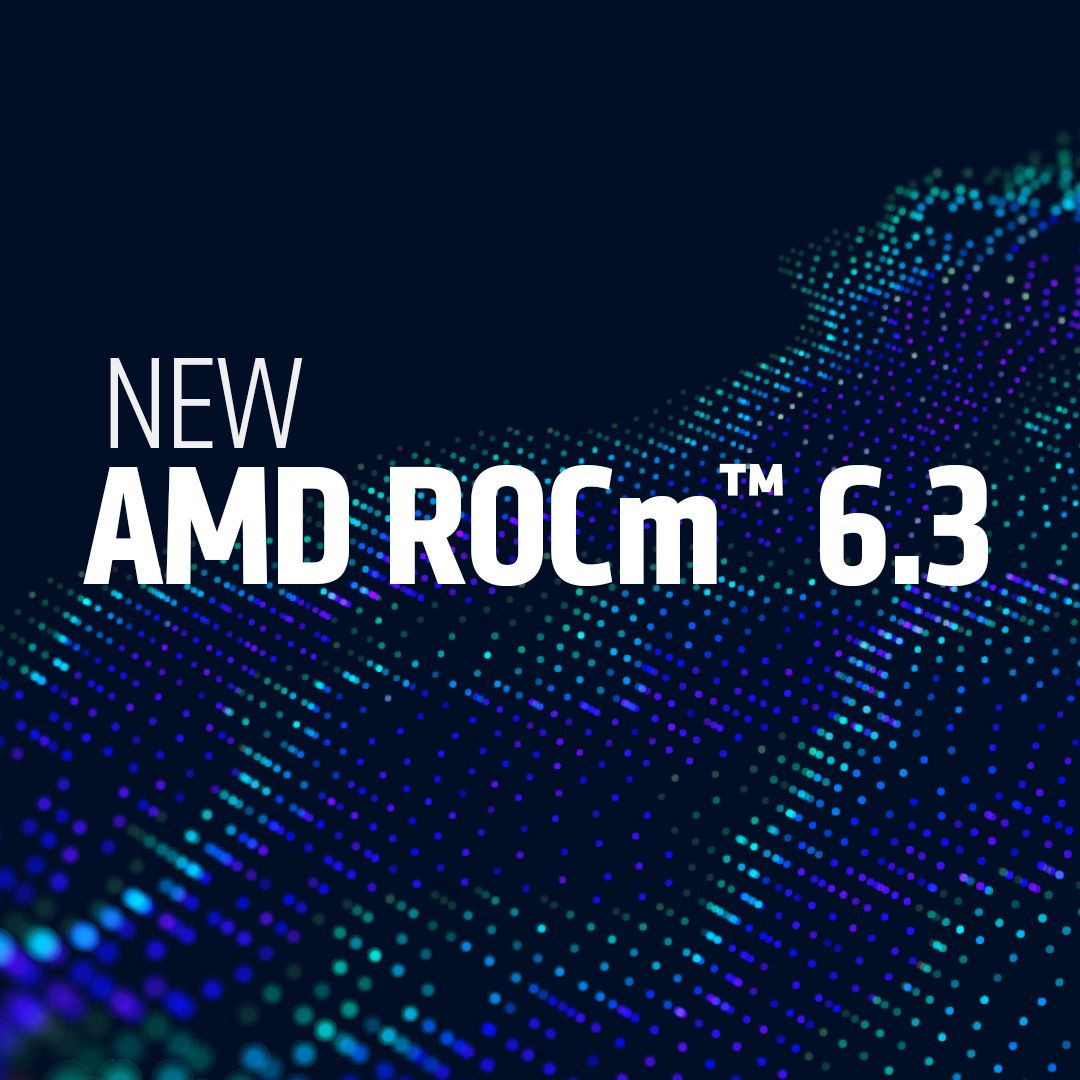
Challenges in AI, ML, and HPC
As AI, machine learning (ML), and high-performance computing (HPC) grow in importance, they also present challenges. These technologies require powerful computing resources, efficient memory use, and optimized software. Developers often face difficulties when moving old code to GPU systems, and scaling across multiple nodes can complicate matters. Proprietary platforms may restrict flexibility, making it tough for organizations to adopt new technologies. Open-source platforms with advanced optimizations are essential for maximizing GPU capabilities.
AMD ROCm 6.3: A Powerful Open-Source Solution
AMD has introduced ROCm 6.3, an open-source platform specifically designed for AI, ML, and HPC tasks on AMD Instinct GPU accelerators. This platform combines advanced tools and optimizations to deliver high performance while remaining accessible and adaptable for developers.
Key Features
- SGLang Support: Enhances AI inferencing with efficient language capabilities for smoother execution of complex models.
- Re-engineered FlashAttention-2: Improves training and inference speeds by resolving performance bottlenecks.
- Multi-node FFT Support: Optimizes fast Fourier transforms for better scalability in HPC workflows.
- Enhanced Computer Vision Libraries: Offers improved algorithms for tasks like object detection and image processing.
- AMD Fortran Compiler: Bridges legacy code to GPU acceleration, facilitating scientific computing applications.
Technical Highlights and Benefits
ROCm 6.3 is tailored to meet modern workload demands. Key technical highlights include:
- Performance Optimization: FlashAttention-2 enhances memory use and computational efficiency, especially for resource-intensive transformer models.
- Scalability: Multi-node FFT support allows efficient scaling across GPU clusters for large simulations and complex data analysis.
- Developer Accessibility: The AMD Fortran compiler aids in transitioning legacy code to GPU-accelerated environments, beneficial for scientific research.
- Specialized Tools: Enhanced computer vision libraries simplify the development of AI applications in areas like autonomous systems and medical imaging.
Results and Insights
Early users of ROCm 6.3 report significant performance and usability improvements. For instance, FlashAttention-2 can boost training efficiency for transformer models by up to 30%. Multi-node FFT support shows remarkable scalability, enabling researchers to handle large datasets effectively while minimizing computational load. The enhanced computer vision libraries also lead to faster inference in image recognition tasks, resulting in shorter development cycles and improved accuracy.
Conclusion
AMD ROCm 6.3 effectively addresses key challenges in AI, ML, and HPC with a robust set of features. By focusing on scalability, legacy code integration, and performance, it provides developers and organizations with a reliable and flexible toolset for modern computing needs. Features like SGLang support, FlashAttention-2, and enhanced computer vision libraries offer practical benefits without unnecessary complexity.
As GPU acceleration becomes increasingly vital, ROCm 6.3 stands out as a capable platform. Its open-source design and commitment to collaboration ensure it remains a valuable resource for tackling today’s computational challenges.
Stay Connected: Follow us on Twitter, join our Telegram Channel, and LinkedIn Group. Don’t forget to check out our 60k+ ML SubReddit for continuous insights.
If you want to enhance your company with AI, explore how AMD ROCm 6.3 can give you a competitive edge.
Discover AI Solutions:
- Identify Automation Opportunities: Find key customer interactions that can benefit from AI.
- Define KPIs: Ensure measurable impacts from your AI initiatives.
- Select an AI Solution: Choose tools that meet your needs and offer customization.
- Implement Gradually: Start with pilot projects, gather data, and expand cautiously.
For AI KPI management advice, contact us at hello@itinai.com. For ongoing insights, follow us on Telegram at t.me/itinainews or Twitter @itinaicom.


























